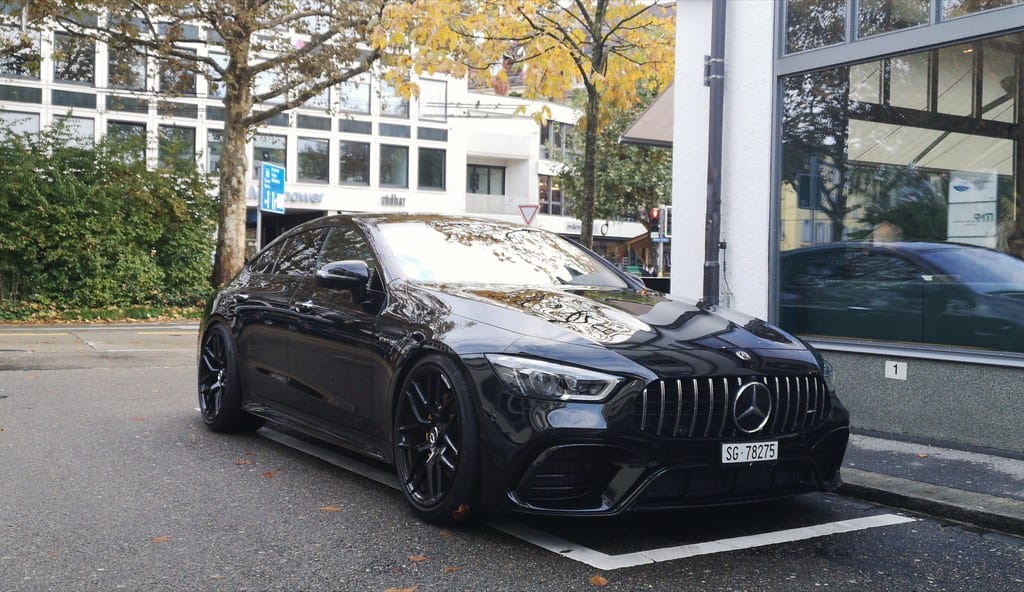Mercedes-AMG Kills the Four-Cylinder: A Return to Performance Purists' Dreams
Mercedes-AMG has officially announced it will phase out four-cylinder engines from its performance lineup, marking a dramatic shift back to inline-six and V-8 powertrains that enthusiasts have long demanded. This decision represents one of the most significant strategic pivots in the luxury performance segment, directly challenging the industry's downsizing trend that has dominated automotive engineering for over a decade.
The End of an Efficiency Era
The German performance division's move to eliminate turbocharged four-cylinder engines from future AMG models signals a clear prioritization of driving experience over fuel economy regulations. Mercedes-AMG had introduced four-cylinder engines in models like the A45 S and CLA45 S as part of broader industry efforts to meet increasingly stringent emissions standards while maintaining performance credentials.
"We're returning to what AMG has always represented—uncompromising performance," said a Mercedes-AMG spokesperson during the announcement. "Our customers have consistently told us they want the character and sound that only comes from larger displacement engines."
This decision comes at a time when many luxury manufacturers are doubling down on electrification and smaller displacement engines to meet global emission targets.
What's Coming: The New Powertrain Lineup
Inline-Six Renaissance
Mercedes-AMG's new strategy centers around its advanced 3.0-liter inline-six engine with integrated starter-generator (ISG) technology. This powertrain, already featured in models like the AMG C63 S E Performance, combines traditional six-cylinder character with hybrid assistance to deliver both performance and efficiency.
The inline-six configuration offers several advantages over four-cylinder alternatives:
- Inherently better balance and smoother operation
- Superior sound characteristics that AMG customers expect
- Greater potential for high-output applications
- Enhanced refinement at high RPMs
V-8 Commitment Strengthened
Perhaps more significantly, Mercedes-AMG has reaffirmed its commitment to V-8 engines, with the twin-turbocharged 4.0-liter V-8 continuing as the flagship powerplant. Recent variants of this engine produce up to 630 horsepower in models like the AMG GT 63 S E Performance, proving that traditional displacement remains viable in the performance luxury segment.
Market Response and Competitive Implications
Customer Satisfaction Drives Decision
Internal data from Mercedes-AMG reveals that customer satisfaction scores for V-8 and inline-six models consistently outperform four-cylinder variants by significant margins. Buyers in the $60,000+ performance segment prioritize engine character, sound, and refinement—areas where larger displacement engines maintain clear advantages.
"The four-cylinder experiment taught us valuable lessons about efficiency," noted an AMG development engineer, "but it also reinforced that our customers aren't willing to compromise on the emotional connection to their vehicles."
Industry Context
This move positions Mercedes-AMG distinctly against competitors like BMW M and Audi Sport, both of which continue investing heavily in four-cylinder performance applications. BMW's latest M2, for instance, uses a turbocharged four-cylinder, while Audi's RS3 achieves remarkable performance from its five-cylinder engine.
Mercedes-AMG's strategy suggests confidence that the performance luxury market will support higher-displacement engines despite regulatory pressures and fuel costs.
Timeline and Model Impact
The transition away from four-cylinder engines will occur gradually over the next three model years. Current four-cylinder AMG models will continue production through their planned lifecycle, but replacement models will exclusively feature inline-six or V-8 powertrains.
Entry-level AMG models previously equipped with four-cylinder engines will likely see price increases as they adopt more expensive inline-six technology. However, Mercedes-AMG believes the enhanced driving experience will justify premium positioning.
The Bigger Picture: Performance vs. Efficiency
Mercedes-AMG's decision reflects broader questions facing the automotive industry about the future of internal combustion engines. While many manufacturers pursue electrification and downsizing, AMG's approach suggests that certain market segments still value traditional performance characteristics over maximum efficiency.
This strategy also buys time for Mercedes-AMG to develop more sophisticated electrification technologies for future performance applications, potentially including dedicated electric AMG models that can deliver the brand's signature driving experience without internal combustion engines.
Key Takeaways
Mercedes-AMG's elimination of four-cylinder engines represents a bold bet on traditional performance values in an era of automotive transformation. By focusing exclusively on inline-six and V-8 powertrains, the brand is positioning itself as the choice for customers who prioritize driving experience over environmental considerations. This decision will likely influence pricing, model positioning, and competitive dynamics across the luxury performance segment, while setting the stage for AMG's eventual transition to electrified performance solutions.
